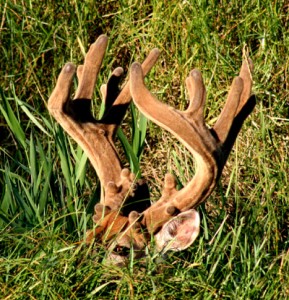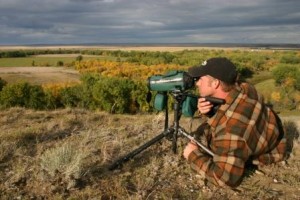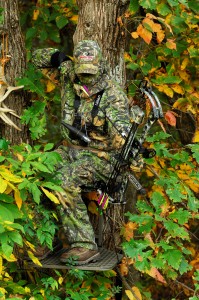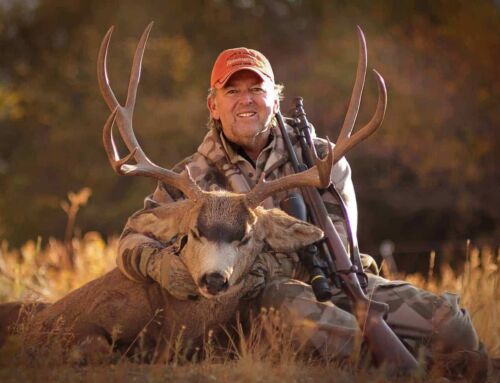 If you want to kill a big, gnarly whitetail in a couple of months, and who doesn’t, do the legwork now. It’s not hard. Put in a little time and effort this summer, and your odds of success shoot way up.
If you want to kill a big, gnarly whitetail in a couple of months, and who doesn’t, do the legwork now. It’s not hard. Put in a little time and effort this summer, and your odds of success shoot way up.
Find The Deer Food
Take a day and drive out to your best hunting spot. Spray down with chigger/tick repellent and hike around the green woods, get a little exercise and zero in corn, soybean or alfalfa fields a farmer planted in the spring. Or didn’t plant, you need to know the location of fallow fields and work them into your plan.
If you hunt 80 to 200 acres or so of all timber, roam around and check the mast trees on ridges and flats and in shady creek bottoms. Focus on white and red oaks in the area. Glass the uppermost limbs and determine which trees are laden with nuts.
Mark crop fields and mast trees on an app or aerial photograph. Then look for cedar thickets, old cutovers or fields, brushy ravines, honeysuckle tangles and similar covers within 100 to 400 yards of the food sources. It’s way too early to scout for rubs or scrapes, but look for doe trails and long, wide buck tracks that weave through and around feeding and bedding areas.
If you jump a few deer, including a big buck, as you poke around, don’t sweat it. The animals will forget all about your intrusion in a couple of months, and at least you know one good deer is in the area.
Glass Bucks
On sultry evenings later on in July and especially August, bucks feed and posture their racks for does and subdominant males in fields of clover, soybeans, alfalfa and the like. No fields in your hunt zone? No problem. A good buck or two or maybe even a bachelor’s club might strut their stuff in a low-grass burn, clear-cut or gas right-of-way carved in the woods.
Drive back to your spot, hide your truck and sneak up a hill 300 yards or so off a field or woodland opening. With a quality 8X or 10X binocular and a 15X to 45X spotting scope, glass for mature bucks at dusk.
Now, forget about their racks. Glass beyond the deer and study the woods and thickets where a big buck stepped out. Look for a fencerow, ditch, timber strip or similar funnel that spills out into a field or cutover. Where and how far does that funnel run back into the cover? Think back to your earlier scouting hike and consult your aerial and notes for the answers. Begin to put things together.
Say, for example, a huge 8-pointer pops out into a clover plot in roughly the same spot three evenings in a row. Studying an aerial of the area, you figure the deer is sneaking off a ridge a half-mile away and dropping down into a creek bottom before veering off into the field. Voila! You’ve narrowed the country and found a vital link in that buck’s bed-to-feed pattern.
Hang Time
In most areas, whitetails cling to their late-summer patterns throughout September and into early October and sometimes deeper into the season. That gives you a big advantage. Once you’ve walked a property and glassed a big deer coming to or going from a feeding area, you can move in and hang a couple of tree stands in pre-determined spots where there’s a decent chance you’ll get a crack at him with your bow in a couple of months.
If you plan to set up hard on the edge of a crop field or cutover, walk or drive there late one morning, when most deer are back in their beds. Consider the predominant wind in the area, and hang a stand or two in big, solid trees with plenty of background cover.
If you decide to hunt 50 yards or deeper off a field, in a staging area or near a mast tree you scouted out, do some additional work. Use a hand clipper and prune a nice, wide path to a tree where you’ll set up. Or, where practical, get really creative and brush hog a strip from a food plot or field, through a brush-choked area and to the base of a big tree. Then hang your fixed-position or ladder stand. In either case, the cleared path will allow easy access to your spot. Many times deer will find a clipped or mowed strip and walk it when going to or from a food source. You’ve created a funnel right into your stand!
Again, don’t worry about making noise and putting down scent when you do your advance work in late July or August. In most areas, whitetails have become accustomed to seeing and hearing people, trucks and tractors. When bow season opens in late September or October, the animals will forget you were ever there. But remember, they should still be feeding and bedding in the same general areas.
Climb into a stand you hung way back when, and you should be smack in the middle of the action. There’s a good chance you’ll stick a buck and start your 2022 season with a bang.







